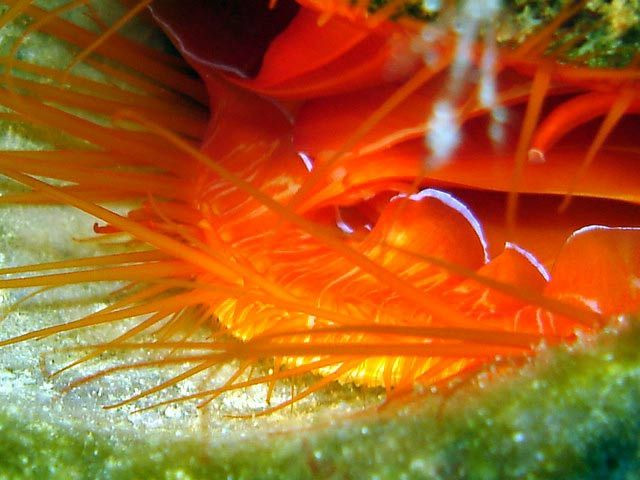‘Disco Clam’ Funky Light Show Source Revealed: Less Like A ‘Glow Stick’ More Like A Mirror

The “Disco Clam” got its name for its spectacular lightshow, but the source of the bivalve's party trick was unknown. Now a graduate student at the University of California, Berkeley, has discovered the source of the disco clam's light show is highly reflective mirrored lips.
Lindsey Dougherty, a diving instructor and Berkeley grad student, wanted to learn more about the disco clam after discovering the clams while diving in Indonesia in 2010. Dougherty ruled out bioluminescence as the source of the light show put on by the disco clam, scientifically known as Ctenoides ales. Bioluminescence is caused by a chemical reaction within an organism, causing it to glow. Fireflies are an example of bioluminescence, and the process is also seen in some types of fish, squid and jellyfish. Disco clams are found throughout the Pacific Ocean at a depth of 10 to 150 feet.
The disco clam has mirrored lips, acting like a disco ball, which reflect the surrounding light. The clam opens up frequently, around twice per second, which causes the flashing lightshow. The mirrored lips of the clam contain tiny silica spheres that reflect the blue light that penetrates into seawater. Only the inner lip of the disco clam is covered with these silica spheres, which makes the reflected light more prominent, notes Berkeley.
Dougherty is not done studying the disco clam. According to her page at the University of California Museum of Paleontology, "My research is currently focused on the evolution of the flashing behavior that occurs in these 'Disco Clams.' I am attempting to understand what evolutionary stressors led to the development of this mechanism, what biomechanical basis controls it, and what the intra- or inter-specific behavioral purpose behind it may be."
In her lab, Dougherty is raising disco clams to better understand their behavior, whether it is to attract mates or a defensive mechanism against predators. Doughtery's research was published in the Journal of the Royal Science Interface.
© Copyright IBTimes 2024. All rights reserved.












